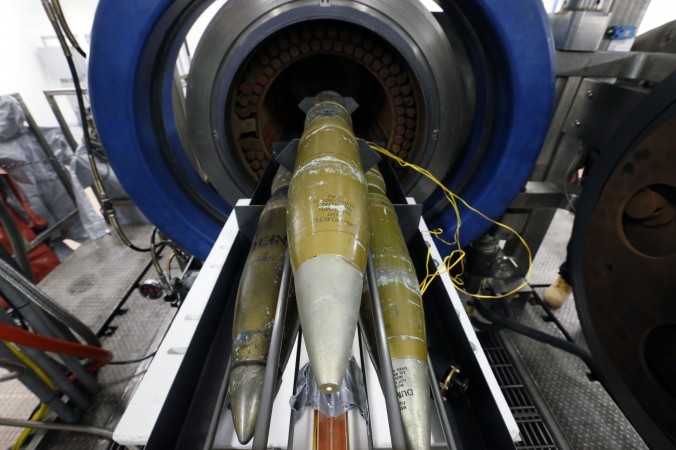The global chemical weapons watchdog said in a new report that it has destroyed two Syrian chemical weapons facilities and expects the destruction of all 12 facilities to be completed this summer.
Ahmet Uzumcu, head of the Organization for the Prohibition of Chemical Weapons, said in his monthly report to the U.N. Security Council obtained Monday by The Associated Press that he expects the five underground facilities to be destroyed before June 30, and the destruction of seven aircraft hangars where deadly chemicals were also made “to be fully completed shortly thereafter.”
The destruction of the chemicals and the facilities to produce them is a key part of the elimination of Syria’s chemical weapons program which was ordered by the Security Council in September 2013. Uzumcu said a special remote monitoring system used by the U.N. nuclear agency will be installed in the five underground facilities, to ensure that they are not used again.
Syria’s move to join the OPCW in 2013 was widely seen as a way to avert U.S. airstrikes in the aftermath of a chemical attack on a Damascus suburb that killed hundreds of civilians. The Syrian government and rebels blamed each other for the attack.
Early last month, an OPCW fact-finding mission concluded “with a high degree of confidence” that chlorine was used as a weapon on three villages in northern Syria from April to August 2014, killing 13 people. It did not assign blame, and again the government and rebels blamed each other.
U.N. Secretary-General Ban Ki-moon said in a letter accompanying the report that the work of the fact-finding mission on chlorine “is ongoing.” He reiterated his “unequivocal condemnation of the use of toxic chemicals as weapons, by any party to the conflict.”
The U.N. and the OPCW have said all 1,300 tons (1,200 metric tons) of Syria’s declared chemical weapons and agents have been removed.
The report said 98 percent have been destroyed, including all of most toxic agents like Sarin nerve gas. The remaining chemicals and their residue are being destroyed in the United State, Britain, Germany and Finland.
But the OPCW indicated that it is still concerned that Syria may be hiding some of its chemical weapons capabilities. The report said an OPCW team visited Syria for the seventh time from Jan. 25 to Feb. 5 for discussions on outstanding issues in the government’s original declaration. SAPA






 WhatsApp us
WhatsApp us 


1 comment
when do they start with israels nuke stokepile?